Large-Scale Preparation of Hair Follicle Germs Using a Microfluidic Device
January 2024
in “ACS Biomaterials Science & Engineering”
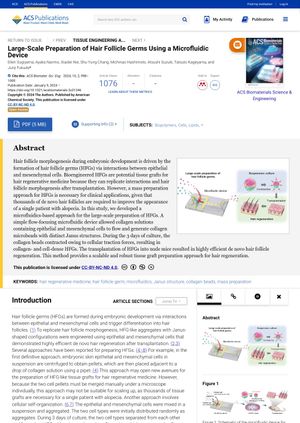
TLDR A new method using a microfluidic device can prepare hair follicle germs efficiently for potential use in hair loss treatments.
The study "Large-Scale Preparation of Hair Follicle Germs Using a Microfluidic Device" presents a new method for preparing hair follicle germs (HFGs) using a microfluidic device. The device created collagen-enriched HFGs in a scalable, one-step, shape-controllable manner. The researchers used epithelial and mesenchymal cells from embryonic mouse skin to create Janus-shaped collagen beads, which were then transplanted into mice to evaluate their hair regeneration efficiencies. The hair regeneration ability of these microfluidic hair follicle germs (mfHFGs) was more than twice that of self-sorted hair follicle germs (ssHFGs). The study suggests that this method could be used for large-scale preparation of tissue grafts for hair regenerative medicine, potentially benefiting patients with alopecia. However, for practical use, the cells used should be replaced and optimized with cell sources of human origin.
View this study on pubs.acs.org →
Cited in this study
research Bioprinting of Hair Follicle Germs for Hair Regenerative Medicine
The study developed a new way to create hair-growing tissue that can help regenerate hair follicles and control hair growth direction.

research Expansion Culture of Hair Follicle Stem Cells Through Uniform Aggregation in Microwell Array Devices
The new microwell device helps grow more hair stem cells that can regenerate hair.
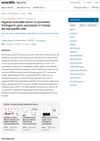
research Hypoxia Inducible Factor-1α Promotes Trichogenic Gene Expression in Human Dermal Papilla Cells
HIF-1α is important for hair growth and could be a treatment target for hair loss.
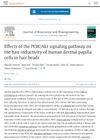
research Effects of the PI3K/Akt Signaling Pathway on the Hair Inductivity of Human Dermal Papilla Cells in Hair Beads
Activating the PI3K/Akt pathway improves hair growth by human dermal papilla cells in hair beads.

research Electrical Stimulation to Human Dermal Papilla Cells for Hair Regenerative Medicine
Electric stimulation can increase hair growth by activating certain genes in skin cells.
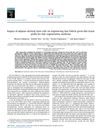
research Impact of adipose-derived stem cells on engineering hair follicle germ-like tissue grafts for hair regenerative medicine
Adding human fat-derived stem cells to hair follicle grafts greatly increases hair growth.
research Back to the Future: From Appendage Development Toward Future Human Hair Follicle Neogenesis
research Establishment of an Efficient Primary Culture System for Human Hair Follicle Stem Cells Using the Rho-Associated Protein Kinase Inhibitor Y-27632
A new method using Y-27632 improves the growth and quality of human hair follicle stem cells for tissue engineering and therapy.
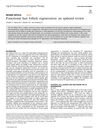
research Functional hair follicle regeneration: an updated review
Hair follicle regeneration possible, more research needed.
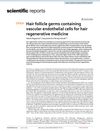
research Hair follicle germs containing vascular endothelial cells for hair regenerative medicine
Adding human blood vessel cells to hair follicle germs may improve hair growth and quality.
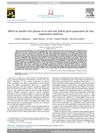
research Effects of platelet-rich plasma on in vitro hair follicle germ preparation for hair regenerative medicine
Platelet-rich plasma can potentially improve hair regeneration by increasing follicular gene expression and hair growth activity.

research Tissue engineering strategies for human hair follicle regeneration: How far from a hairy goal?
Fully regenerating human hair follicles not yet achieved.
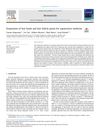
research Preparation of hair beads and hair follicle germs for regenerative medicine
Researchers developed a method to grow hair follicles using special beads that could help with hair loss treatment.
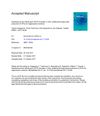
research Spontaneous hair follicle germ (HFG) formation in vitro, enabling the large-scale production of HFGs for regenerative medicine
Researchers found a new way to create hair-growing structures in the lab that can grow hair when put into mice.
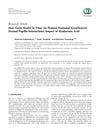
research Hair Germ Model In Vitro via Human Postnatal Keratinocyte-Dermal Papilla Interactions: Impact of Hyaluronic Acid
Adding hyaluronic acid helps create larger artificial hair follicles in the lab.
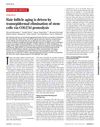
research Hair follicle aging is driven by transepidermal elimination of stem cells via COL17A1 proteolysis
Hair loss and aging are caused by the breakdown of a key protein in hair stem cells.
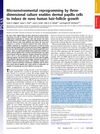
research Microenvironmental reprogramming by three-dimensional culture enables dermal papilla cells to induce de novo human hair-follicle growth
Growing human skin cells in a 3D environment can stimulate new hair growth.

research Fully functional hair follicle regeneration through the rearrangement of stem cells and their niches
Regenerated fully functional hair follicles using stem cells, with potential for hair regrowth therapy.
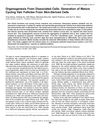
research Organogenesis From Dissociated Cells: Generation of Mature Cycling Hair Follicles From Skin-Derived Cells
Scientists have found a way to create hair follicles from skin cells of newborn mice, which can grow and cycle naturally when injected into adult mouse skin.
research Molecular Mechanisms Regulating Hair Follicle Development
Understanding hair follicle development can help treat hair loss, skin regeneration, and certain skin cancers.